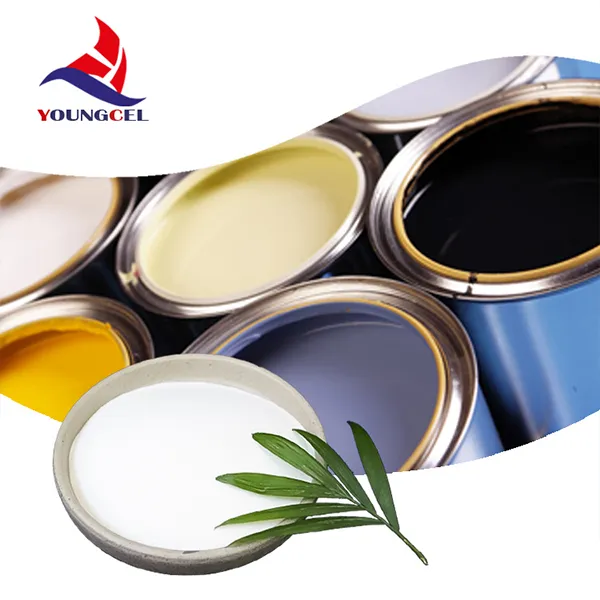The Role of Cellulose and HPMC in Paint Formulations
In the world of paints and coatings, achieving the perfect balance between durability, application ease, and aesthetics is paramount. One of the remarkable innovations in this field has been the incorporation of cellulose derivatives, particularly Hydroxypropyl Methylcellulose (HPMC), which has transformed the formulation of modern paints. This article explores the significance of cellulose, specifically HPMC, and its implications for the paint industry.
The Nature of Cellulose and HPMC
Cellulose is a natural polymer derived from plant cell walls and is renowned for its biodegradable properties and versatility. It serves as a fundamental raw material in various industries, including food, pharmaceuticals, and textiles. When derived from cellulose, Hydroxypropyl Methylcellulose is synthesized through the etherification process where hydroxypropyl and methyl groups are introduced. The result is a non-ionic, water-soluble polymer that exhibits exceptional thickening and film-forming properties.
HPMC is available in various grades, depending on its viscosity and solubility. This versatility allows formulators to tailor their paint products to specific performance characteristics, such as shear thinning behavior, which leads to better application properties.
Importance of HPMC in Paint Formulations
1. Thickening Agent One of the primary roles of HPMC in paint formulations is as a thickening agent. It increases the viscosity of the paint, ensuring that it maintains a consistency that allows for easy application. This feature is crucial for preventing paint from running or sagging on vertical surfaces, providing a smooth and even finish.
2. Stabilization HPMC enhances the stability of paint formulations by preventing the separation of pigments and other solid components. This is particularly important in water-based paints, where various ingredients can tend to settle or separate. By maintaining uniformity, HPMC contributes to consistent color and performance throughout the life of the product.
cellulose hpmc for paint

3. Film Formation Upon drying, HPMC forms a coherent film that adheres well to a variety of substrates. This property is essential for creating a durable surface that can withstand environmental factors such as moisture, UV radiation, and temperature fluctuations. The resilient film formed by HPMC also enhances the paint's overall longevity, making it a preferred choice among manufacturers.
4. Improved Application Properties HPMC offers excellent flow and leveling characteristics, enabling painters to achieve a professional finish with minimal brush marks or roller stipple. The shear-thinning property of HPMC makes the application easier by reducing viscosity under shear (during application) and allowing the paint to recover its thickness once applied, ensuring efficient coverage.
5. Eco-Friendly Solution With increasing concerns over environmental sustainability, HPMC presents a more eco-friendly alternative in the paint industry. As a plant-derived product, it is biodegradable and can help formulators reduce the overall environmental footprint of their products. Additionally, HPMC can contribute to lower Volatile Organic Compounds (VOCs) in water-based formulations, making paints safer for indoor use.
Challenges and Considerations
Despite the numerous advantages of incorporating HPMC into paint formulations, there are some challenges that formulators must consider. The cost of cellulose derivatives can be higher than traditional synthetic thickeners, which may influence product pricing. Furthermore, the compatibility of HPMC with other formulation ingredients must be meticulously evaluated to avoid potential adverse reactions that could impact the performance of the paint.
Conclusion
The integration of cellulose and HPMC in paint formulations represents a significant advancement in the industry. These materials not only enhance the functional properties of paints but also align with the growing demand for environmentally friendly solutions. As manufacturers continue to explore the full potential of cellulose derivatives, we can expect to see even more innovative paint products that are not only efficient and effective but also contribute to a more sustainable future. The evolution of paint technology will undoubtedly continue to embrace the unique benefits provided by HPMC, making it a staple in modern paint formulations.
-
Rdp Powder: Key Considerations for Wholesalers in the Building Materials IndustryNewsJul.08,2025
-
Key Considerations for Wholesalers: Navigating the World of Hpmc - Based ProductsNewsJul.08,2025
-
Hpmc Detergent: Key Considerations for WholesalersNewsJul.08,2025
-
Key Considerations for Wholesalers: China Hpmc For Tile Adhesive, Coating Additives, Concrete Additives, and MoreNewsJul.08,2025
-
Crucial Considerations for Wholesalers: Navigating the World of Construction MaterialsNewsJul.08,2025
-
Key Considerations for Wholesalers Sourcing Additive For Cement, Additive For Concrete, Additive For Putty from Additive Manufacturer Shijiazhuang Gaocheng District Yongfeng Cellulose Co., Ltd.NewsJul.08,2025




